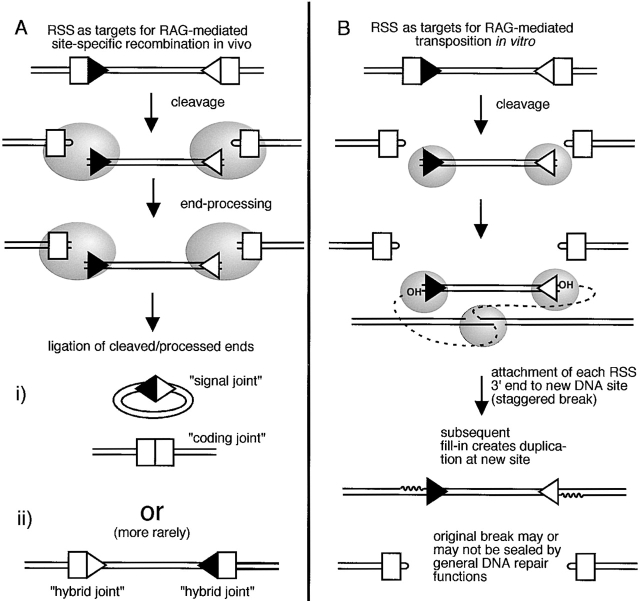Figure 1.
RAG-mediated rearrangement. (A) V(D)J recombination involves site-specific recognition and cleavage of a 12- and 23-spacer RSS (filled and open triangles). The steps that directly involve RAG-1 and RAG-2 are indicated by the gray ovals. These include strand cleavage and possibly some coding end processing. The gray ovals are not intended to specify actual protein position or size. The rejoining of the broken ends is achieved by other DNA repair functions. (i) The usual outcome is a signal joint (at most loci, this product is excised by recombination) and a coding joint. Mostly characteristic of the coding joint product, base loss and additions are also sometimes seen at signal joints. (ii) A less common outcome of V(D)J recombination is hybrid joint formation, where the RSS are exchanged between coding ends. This type of joint also exhibits base loss and addition. (B) RAG-mediated transposition involves site-specific recognition and cleavage of a 12- and 23-spacer RSS, followed by attachment of the RSS 3′ ends to a staggered break introduced at a nonspecific target site. Fill-in synthesis of the staggered break completes the formation of a 5-bp target site duplication, and this, along with the resealing of DNA ends, remaining at the exit site, presumably could be carried out by non-RAG functions. RAG-mediated transposition has not yet been observed in vivo.

